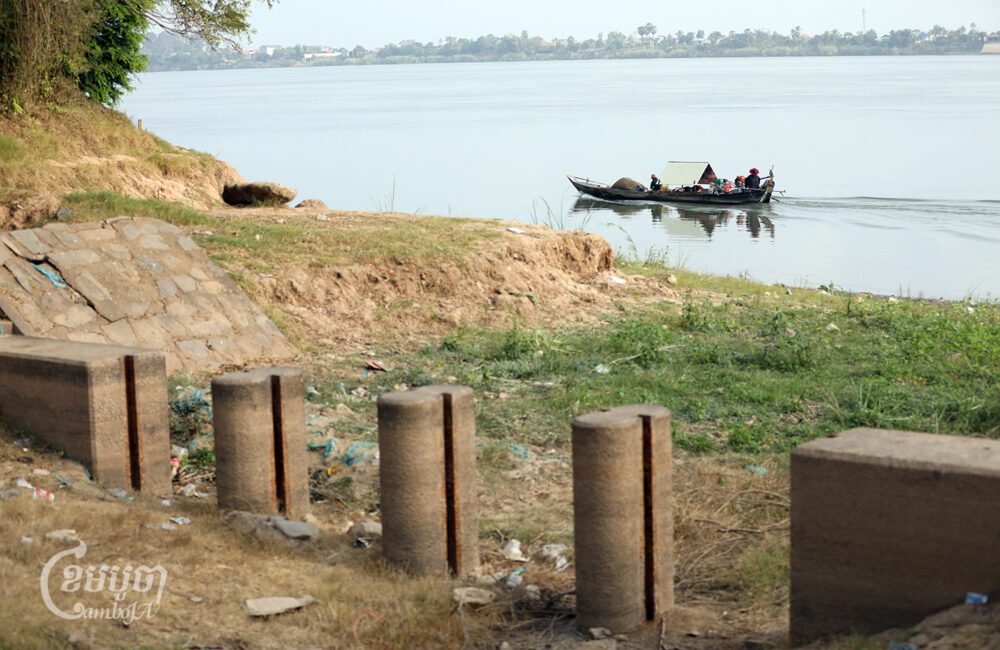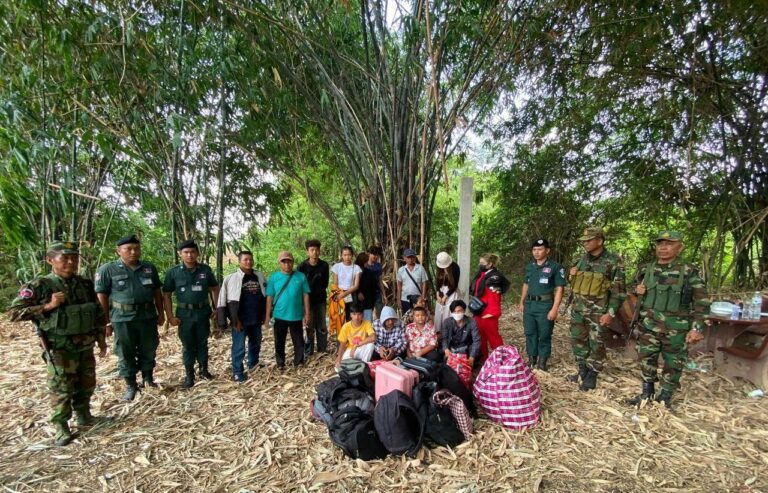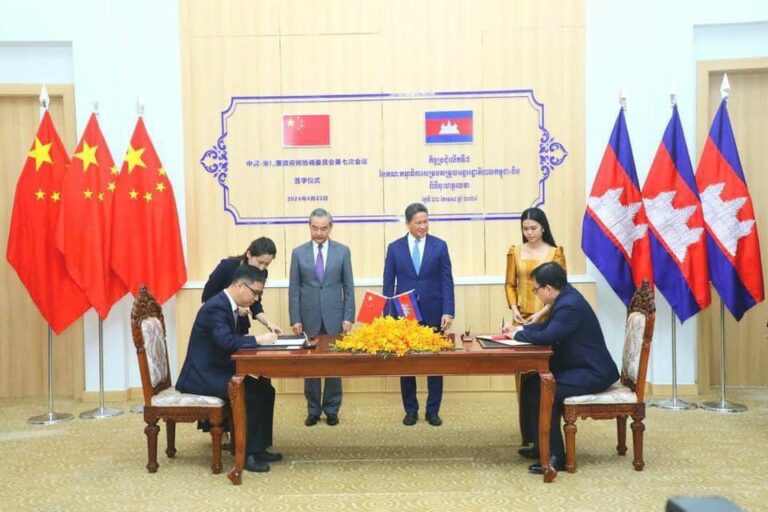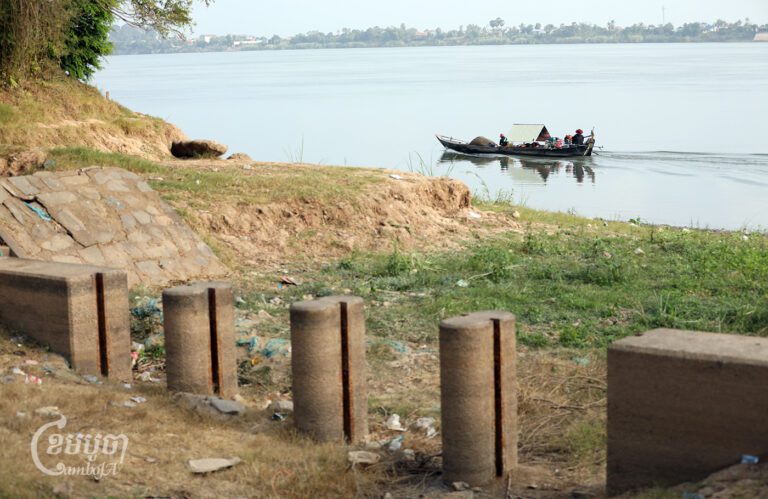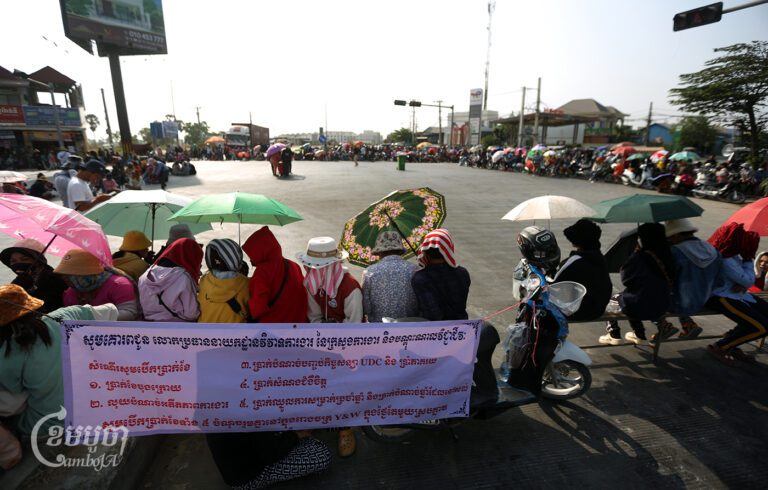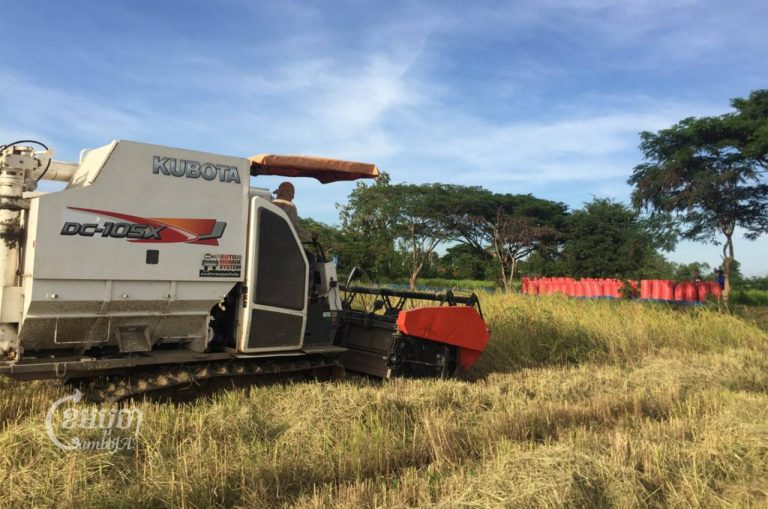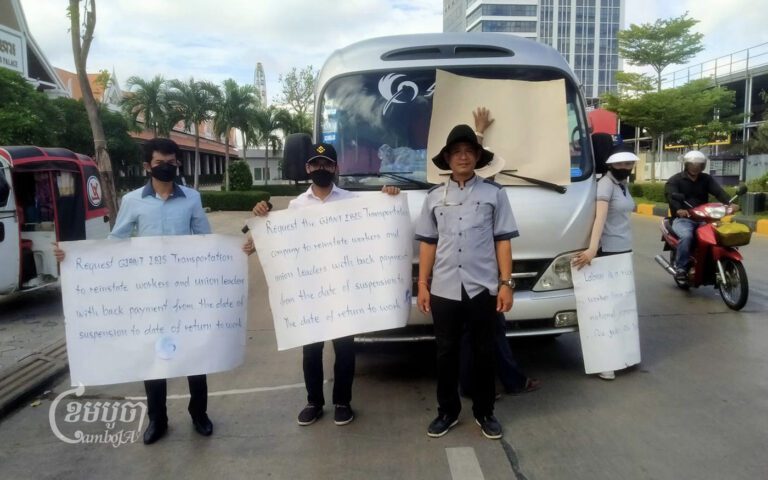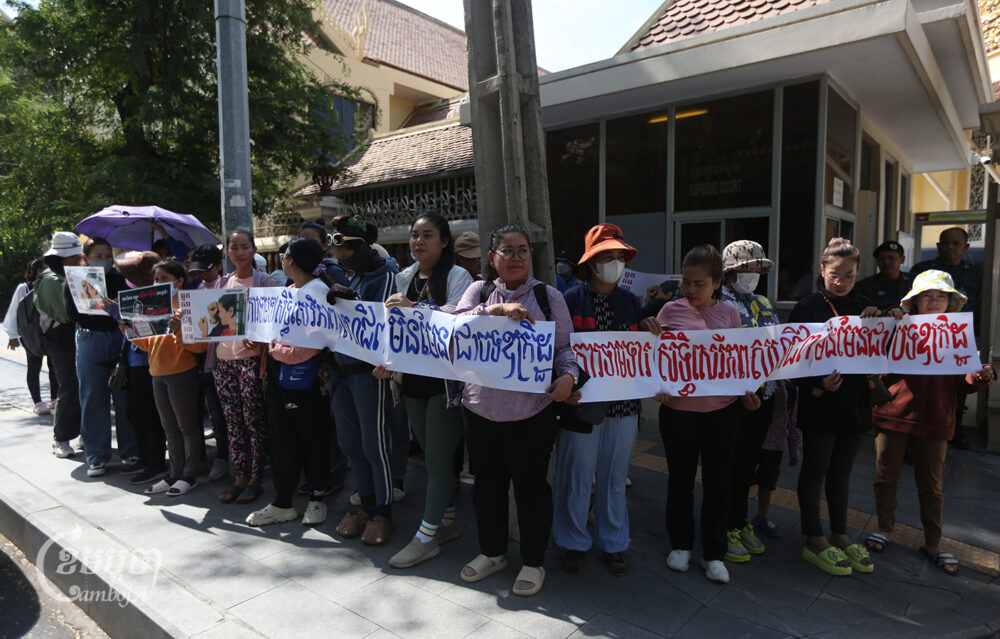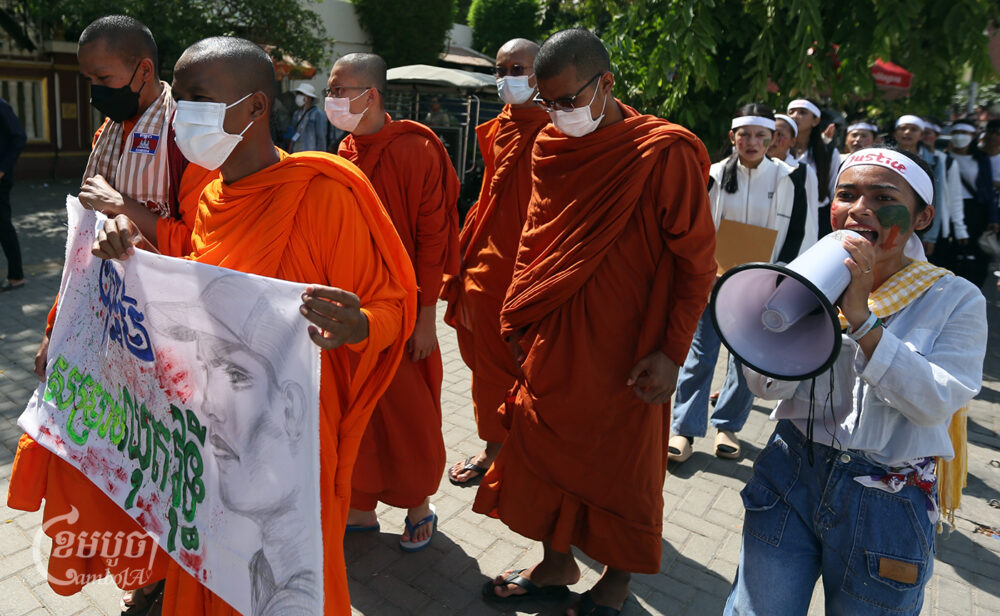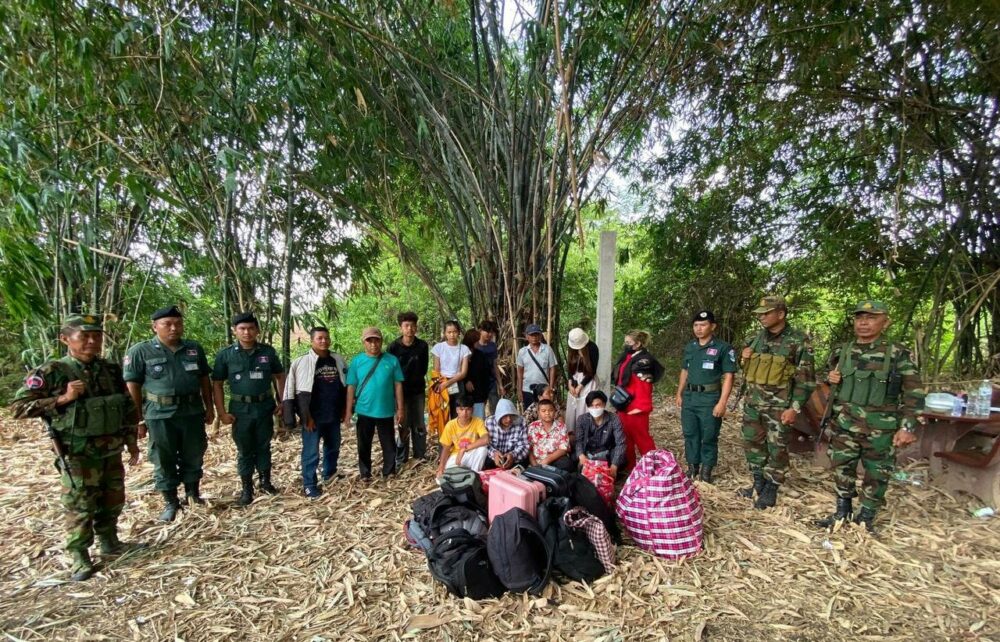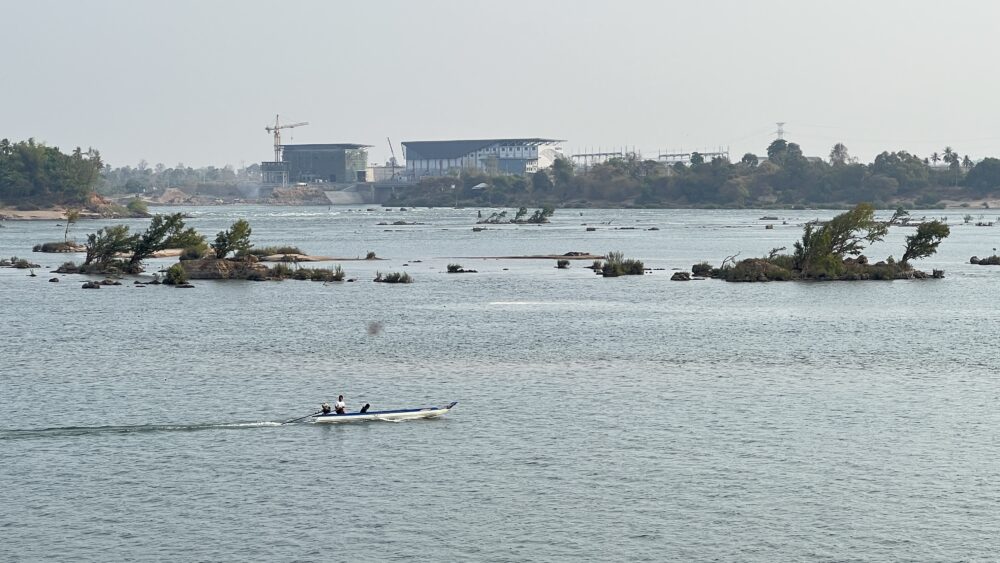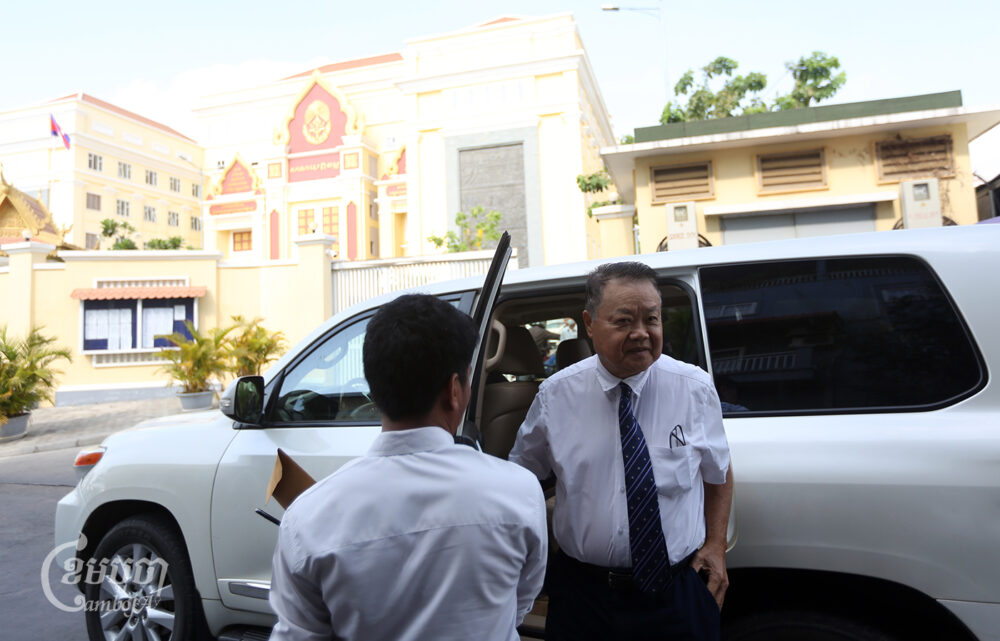Heang Nang Eng, 60, had a bad feeling when she first heard rumors about a canal project that would impact the Prek Ta Hing stream near where she lives.
“Some people have a lot of land, so even if they are affected by this project, they can still move. But I don’t have other land,” said the resident of Koh Thom district in Kandal province. “When my relatives came to visit, they turned on their phones to listen to the news of this canal. I told them not to listen.”
She’s lived on a small piece of land near the stream her entire life. If the government proceeds with the canal project, she’s worried she will lose her home and have nowhere else to go.
Cambodia plans to start construction on the $1.7 billion Chinese-funded Funan Techo Canal this year and complete construction by 2028. The project proposes to dig a 180 kilometer canal connecting Phnom Penh to Kep province, affecting waterways in Kandal, Takeo, Kampot and Kep provinces.
Government statements assure that the canal will greatly improve the country’s economy as well as the regional inland waterway network in the Mekong. But locals worry about losing their homes and livelihoods. The project will also reduce Cambodia’s reliance on Vietnam’s waterways for trade, which has geopolitical implications for Cambodia’s relationship with China and Vietnam.
“Everyone is worried because we are living in this place. When it is dismantled, we will need to spend more,” Nang Eng said. Her distress about the project was shared by over a dozen residents who spoke to CamboJA News.

“There Is No Information”
“There is no information, and it is getting closer to when construction will start,” said Mov Sarin, a motorcycle taxi driver and ex-soldier who has lived beside the Prek Takeo stream in Kien Svay district, Kandal province for more than three decades. “If there is appropriate compensation, we can accept it. But we want to know exactly how long the canal will be.”
Sarin was scared when he first heard about the development project, worried his fate would be the same as those displaced along the shrinking Boeung Tamok lake. He’s seen what he suspects were Chinese investors involved in the project drive in to visit Prek Takeo, which made him anxious because he didn’t know what they were doing while his community is still waiting for answers. The Chinese state-owned China Road and Bridge Corporation was contracted to conduct a feasibility study of the project.
Chey Sam An, chief of Samrong Thom commune in Kien Svay district, has not yet received any official information from the government about the canal’s impacts on his commune.
“We do not know where they will be [building]. The authorities do not know how big the canal is and how long it will take,” he said.
“[Families] will be affected, but we [the government] can pay compensation,” he said, adding that there won’t be an issue “as long as we don’t take their [land] without paying them.”

Government spokesperson Pen Bona would not provide specifics when asked about the start date of the project and what kind of compensation will be provided to affected local residents. He said the government will inform residents “according to the schedule” of the government.
“If they [the government] has not yet studied the number of people [that will be impacted], they should study this quickly and speak with locals to find a solution in advance and not make people worried,” said Am Sam Ath, operations director at the NGO Licadho.
Local residents are not alone in anticipating the potential impacts of the canal. Rim Sokvy, an independent researcher based in Phnom Penh, said the project will have a huge effect on Cambodia’s relationship with Vietnam.
“Vietnam is really concerned about this project,” he said. “When the Funan Techo canal is successful, Cambodia can use it for transit through its own port, which is a concern of Vietnam because Vietnam will lose its economic benefit and also lose political influence in Cambodia.”
The spokesperson for Vietnam’s Foreign Affairs Ministry did not respond to a request for comment.
The Mekong River Commission (MRC), the inter-governmental organization that manages the shared water resources of Cambodia, Laos, Thailand and Vietnam, “has requested and been waiting for further detailed information of the project from Cambodia,” according to an email sent to CamboJA News.
“We are working closely with the notifying country (Cambodia) to obtain more detailed information,” the MRC stated.

According to Brian Eyler, a director at the Stimson Center, when Cambodia notified the MRC about the project in August, it incorrectly classified the canal as a tributary project rather than a mainstream project. A mainstream project requires public regional consultations with member countries, technical expert reviews and public disclosure of relevant documents.
Currently, the only available document regarding plans for the project is that August document from the Cambodia National Mekong Committee notifying the MRC of the project. It claims there will be “no significant impact on the Mekong River system’s daily flow and annual flow volumes” and minimal social and environmental effects.
“But there is no discussion of the actual environmental impacts to the Mekong River and the transboundary floodplain within the document,” he said. “The document also lacks a cost and benefit analysis and a discussion of how the economic benefits will flow to Cambodians.”
Eyler says the project could cause the Boeung Preak Lapouv wetland to dry up as well as affect agriculture and the habitats of endangered species. With potentially major environmental impacts, he believes a full technical review is needed for the project.
Money Woes
Earlier this month at a small stall along the Prek Ta Hing stream in Koh Thom district, Kandal province, a group of five women sat sewing and chatting. They told a CamboJA News reporter they had heard rumors that the authorities plan to come to the area to take measurements in April in preparation for the canal. The women feared losing their land and their homes if it ended up being built in this area.
Despite promises of compensation, they worried it wouldn’t be equal to the amount they saved up to build their current houses in the first place. Plus, paying for the construction of new homes elsewhere could be expensive.

Farmers and fishers CamboJA spoke to also noted that they use the water from the river to make a living, and worried that they wouldn’t be able to have access once the canal was built.
“If we knew the compensation we would receive, we could go to a new place to live,” said Sou Thorn, a resident of Preak Ta Ek in Sa’ang district, Kandal province who sells fish for a living.
“Everyday we are not happy because we do not know when the compensation will be given. Where can we go to find a house if we do not have the money? This is what we really want to know.”

Phan Rim, spokesperson at the Ministry of Public Works and Transport, said in a Telegram message that the ministry has done preliminary studies of the project’s impact on people, the environment, infrastructure and the economy and continues to study these factors “in more detail.” An inter-ministerial working group led by the Ministry of Economy and Finance will also evaluate the effects on locals “in the near future.”
“The people are not worried. They are happy when they hear the news [of the canal] all over the country, not just some people,” claimed government spokesperson Bona. “It is advantageous to the whole country.”
Fear of Opposing the Government
Lueng Veng, Lek Boun village chief in Sa’ang district, said that there are around 400 families living along the Preak Ta Ek stream in his village.
“For people who live far from this village, they are happy to see the development, but the people living here are not happy,” he said. “No matter how small their house is, they do not want to leave. But this is a government project and we cannot oppose it.”
Sou Thorn, the fish seller, feels the same hesitancy to oppose the development of the canal despite his community’s concerns.
“We cannot oppose. So the important thing is that the compensation is appropriate to be able to find a new place,” he said.

Encouraging citizens to side with the government is part of the project’s ultimate goal, according to Aun Chhengpor, a research fellow at the NGO Future Forum. The canal is a way for the ruling CPP to promote domestic nationalism in an effort to restore Cambodia’s past glory, he said in a Telegram message. If the narrative around the project is successful, he says it could further cement support for the CPP and Cambodia’s new government.
“By moving ahead with the project, it is an unspoken reaffirmation of Cambodia’s attempt at seeking greater autonomy with its eastern neighbour with the help from China. To the CPP, relations with Vietnam and China are equally crucial and strategically important.”
But whatever Cambodia’s foreign policy goals are for the project, residents like Deou Seang of Kien Svay district in Kandal province still want to know how the canal will affect their homes as soon as possible. Seang, 65, has lived along the Prek Takeo stream since 1979, and said the only information she has received about the project is from Facebook.

She lives in fear of losing her home and land, and stresses that her and her neighbors need to receive sufficient compensation. People are already in financial straits because “everyone owes the bank.”
“People are worried. They don’t know where they’ll go to do business,” she said. “This [project] is what the state needs, so the important thing is for the government to care about the people.”



